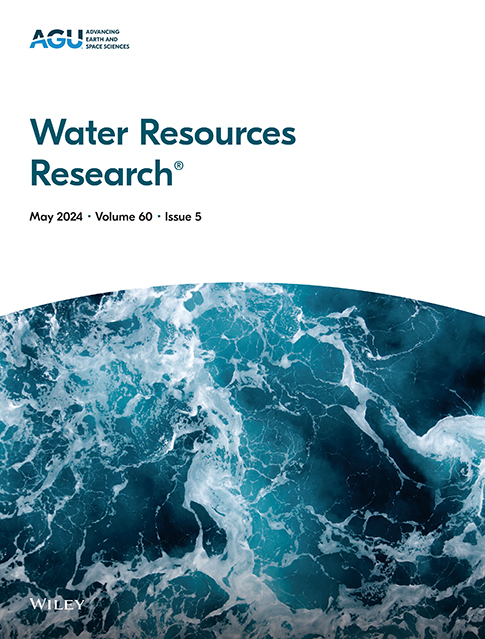The Evolution of Hydrodynamic Intensities and Sediment Erosion Along Submerged Aquatic Vegetation
IF 4.6
1区 地球科学
Q2 ENVIRONMENTAL SCIENCES
引用次数: 0
Abstract
Submerged aquatic vegetation, a key component of these solutions, plays a crucial role in coastal and river ecosystems by reducing flow velocity and preventing sediment erosion. Although extensive research has explored the velocity profiles of submerged meadows covering entire channels, natural submerged aquatic vegetation distributions are often patchy and interact with three-dimensional velocity fields. Although some studies have shown that vegetation patches improve sediment deposition, the effects of 3-D meadows on flow structures and sediment transport remain unclear. This study aims to investigate the physical mechanisms underlying flow-vegetation-sediment interactions. By combining theoretical derivations and laboratory experiments, we examine the impact of 3-D submerged artificial vegetation on sediment transport and flow development in unidirectional flows. Our results reveal a strong correlation between turbulent kinetic energy, vegetation characteristics, and the co-evolved sand bedforms. The root mean square error of our turbulence prediction model, which includes vegetation factors and sand bed friction, is less than 10% in the fully developed region. Furthermore, in the presence of 3-D meadows, the TKE outside the vegetation increases to triple the levels found within the meadow, significantly influencing bedform development and increasing the roughness height求助全文
约1分钟内获得全文
求助全文
来源期刊

Water Resources Research
环境科学-湖沼学
CiteScore
8.80
自引率
13.00%
发文量
599
审稿时长
3.5 months
期刊介绍:
Water Resources Research (WRR) is an interdisciplinary journal that focuses on hydrology and water resources. It publishes original research in the natural and social sciences of water. It emphasizes the role of water in the Earth system, including physical, chemical, biological, and ecological processes in water resources research and management, including social, policy, and public health implications. It encompasses observational, experimental, theoretical, analytical, numerical, and data-driven approaches that advance the science of water and its management. Submissions are evaluated for their novelty, accuracy, significance, and broader implications of the findings.
 求助内容:
求助内容: 应助结果提醒方式:
应助结果提醒方式:


